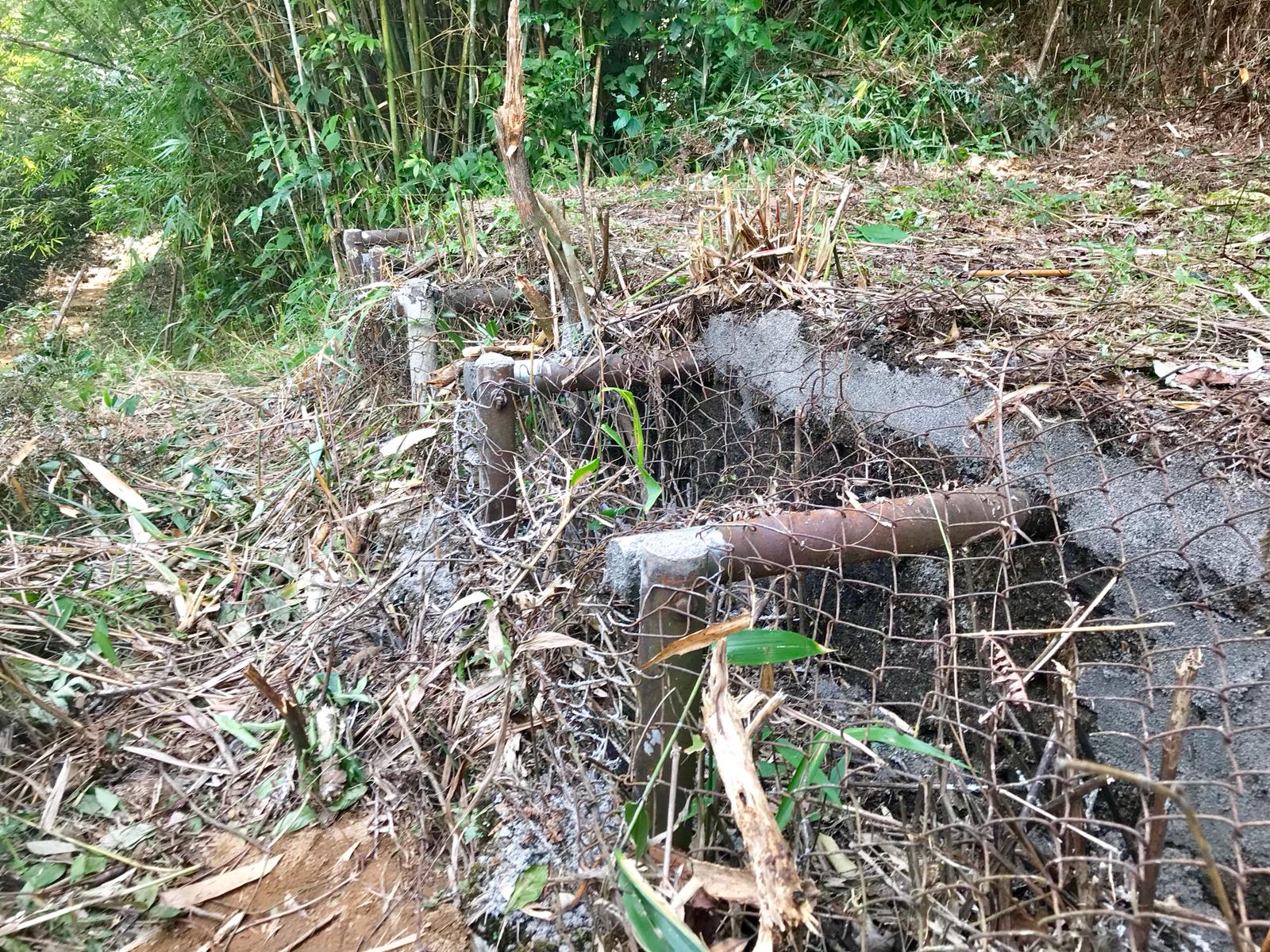
Uranium nightmare returns to haunt residents of Meghalaya

Bremley WB Lyngdoh, the CEO of Ecofriend World, was up for a rude shock when he recently visited a remote village in Meghalaya following reports of leakage of toxic waste from tanks containing uranium effluents.
His US-made Geiger counter, an instrument used for detecting and measuring radiation, recorded in one spot the presence of ionizing radiation as high as 1093 counts per minute (CPM). In other areas around the breached tanks, the radiation levels were fluctuating between 235 CPM and 315 CPM. The count was alarmingly high considering that CPM reading of 100 is considered a warning level.
“Prolonged exposure to such high-dose of radiation levels found only in nuclear reactors definitely poses serious health risk,” said Lyngdoh, the state’s most respected environmental economist. “We don’t know what is stored inside the third concrete tank we found in the area. But to our surprise, the dangerous gamma radiation level near it was 1093 CPM,” he said.
Telltale signs of health hazards of exposure to radiation are visible in the cluster of villages located around such concrete tanks, claim local residents and leaders of civil society organisations.

These tanks were built by the Atomic Minerals Directorate (AMD) in 1995-1996 to seal uranium decay and other remnants of the exploratory mining of uranium deposits the AMD had undertaken in the South West Khasi Hills district in the 1990s.
Meghalaya has an estimated 9.22 million tonnes of sandstone-type uranium deposits, which is 16 per cent of the country’s total reserves and third-highest after Jharkhand and Andhra Pradesh.
The AMD undertook uranium surveys in Meghalaya in early 1970s and established its north-eastern circle office in Shillong in 1976. Eight years later in 1984, sandstone-type uranium deposits were discovered at Domiasiat in the South West Khasi Hills district. Another uranium deposit at Wahkyn in West Khasi Hills district was discovered in 1994.
Following the discovery of the first uranium deposit in the state, the Uranium Council of India Limited (UCIL) started drilling in the state for exploratory mining in 1991, triggering huge public outcry, forcing the Meghalaya government to ask the AMD to suspend its mining venture.
Related news: Meghalaya to set up expert panel to investigate uranium waste leak
“The AMD left the drilling sites overnight, leaving behind radioactive slurry and other remnants of its mining activities such as radioactive gears, tools etc. After a few years, it was summoned to clean up the mess. It was then that these tanks were built at the closed drilling sites to dump the leftovers,” Lyngdoh said.
On September 21, villagers reported that a tank at Domiasiat’s Nongbah Jynrin village exploded, leaking toxic wastes.
Following the report, the Meghalaya government rushed a deputy superintendent of police to the site for inspection. After the field visit, the police officer told the government that there was no explosion or any leakage.
However, when a delegation of Khasi Students’ Union (KSU) accompanied by Lyngdoh visited the village on October 9, it found that many of these tanks had eroded and collapsed causing a high radioactive emission in the area.
“When we visited the area we found that there are five large-size dilapidated concrete tanks. One of the tanks was found to be completely collapsed. Villagers say there are multiple such tanks deep inside the jungle…. The radiation level measured by Lyngdeoh was very high,” said KSU general secretary Donald V Thabah.
Meghalaya’s rural development minister Hamletson Dohling also confirmed the breach as well as leakage after he visited the remote village, some 135 km west of the state capital Shillong on October 20. He termed the development as “dangerous” and expressed surprise that there were signs of repairs in the damaged tanks.
“I don’t have any idea as to who gave the order for the repair works. If there was nothing, why should it be repaired in the first place? What I saw was very dangerous,” Dohling said.
The Meghalaya government meanwhile roped in Indian Institute of Technology (IIT), Guwahati and North-Eastern Hill University (NEHU) to conduct an “in-depth study on the reported leakages.”
Related news: Baghjan oil well explosion: Environmentalists fear deadly impact
The assessment work, however, has not yet been started as KSU and environmentalists expressed reservation over any probe carried out by government-aided institutions, saying these are “dependent agencies” and not “independent agencies.”
Whatever may be the findings of the “assessment study,” the recent development at Nongbah Jynrin village has brought the focus back on health risks of India’s nuclear energy dream. India’s current installed nuclear power capacity is 6780 megawatts (MW) and it aims to increase the capacity to 40,000 MW by 2030.
To achieve the target, the country needs to augment its uranium supply by mining more reserves. Apart from Meghalaya, there are uranium reserves in Jharkhand, Chhattisgarh, Telangana, Andhra Pradesh, Karnataka and Rajasthan. The UCIL is currently operating mines in Jharkhand and Andhra Pradesh only.
The Meghalaya government tried to revive uranium mining activities in the state in 2009 by agreeing to lease 422 hectares in South West Khasi Hills to the UCIL for pre-mining activities. But it revoked the agreement in 2016 following protests by locals. The UCIL closed its offices in the state in 2018.
The actual uranium mining activities though never undertaken in Meghalaya, the villagers in the vicinity of the exploratory drilling sites are bearing the brunt of the radiation exposure.
“Miscarriages, deformities in new-born children and cancer are rampant in the area. Water in the nearby streams and river is also contaminated,” said Forwardman Nongrem, a local student leader of West Khasi Hills district. Fishes in the water bodies were often found dead, he added.
Related news: Environment Day: Government launches scheme to increase green spaces
There are seven villages located within the three kilometre radius of the “breached” tanks.


